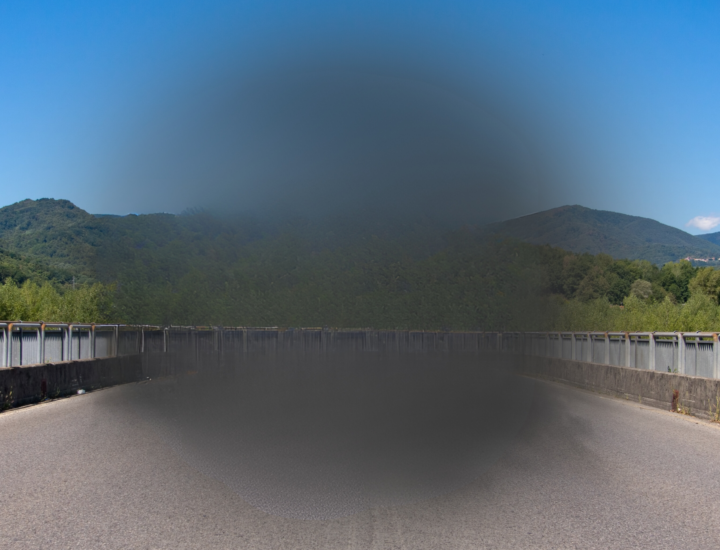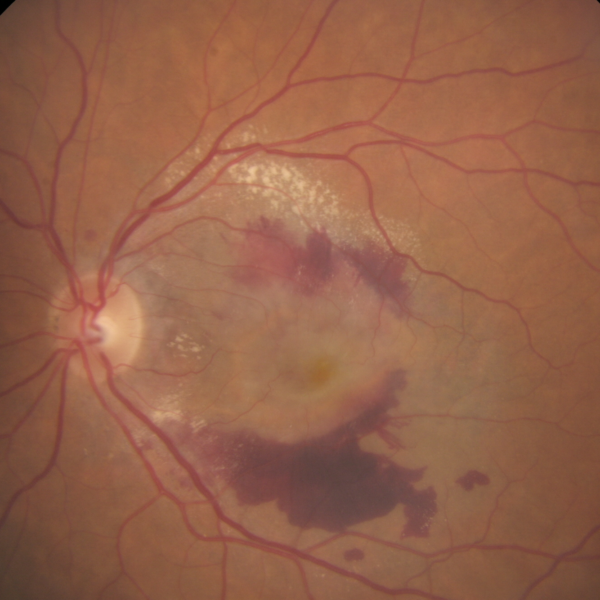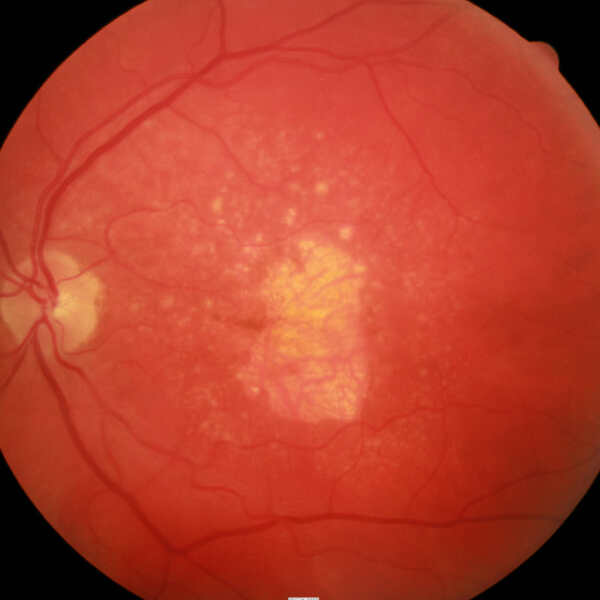Age-related macular degeneration (AMD) is a disease that causes the gradual loss of sight due to blurring or loss of central vision. This is often as a result of a deterioration of the macula, a yellow pigmented structure at the back of the eye that is responsible for our detailed colour vision. The severity of the disease depends on each person and on how quickly it is detected.
Unlike the other inherited retinal diseases (IRDs), AMD is a more common and more genetically-complex condition. Unlike monogenic (“one-gene”) IRDs, AMD is caused by a combination of multiple genes and environmental factors. 1 Also different to IRDs, AMD can be modified significantly by stopping smoking and changing diet (to a diet rich in fruits and vegetable, fish and nuts). 2 This strong environmental link does not exist for the rarer IRDs.
AMD is the most common cause of vision loss in Australians over the age of 50 years, affecting 1 in 6 people. 3 The visual outcomes are variable. Of those with early signs of AMD, only around 1 in 6 will go on to lose vision. Again, this is different to IRDs, where the chance of vision loss is much higher.

How is AMD identified?
AMD is a spectrum, with early and intermediate disease being characterised by the presence of yellow deposits in the retina called drusen (which can be seen in both the images below).
The early and intermediate stages of AMD are less likely to cause changes in the vision.
There are also two late stages of AMD which can both cause significant vision loss:
- neovascular (wet) AMD (as per the image below left)
- geographic atrophy (GA) (dry) (as per the image below right)
In neovascular AMD, new blood vessels grow into and under the retina, which can leak and cause bleeds. These bleeds can lead to sudden vision loss and distorted vision.
In geographic atrophy, the photoreceptor and RPE cells die over time, causing a gradual loss of central vision.
Source images: courtesy of Professor Robyn Guymer, Macular Research Unit, Centre for Eye Research Australia


What are the symptoms of AMD?
As suggested by the name, AMD primarily affects the macula, and initial symptoms are similar to macular IRDs and cone dystrophies.
People with early signs of AMD notice difficulties with central vision, such as when reading or looking at a television.
The intermediate stages of AMD can cause waviness of vision, with more significant changes in central vision.
Late stage AMD can lead to permanent loss of the central vision. This loss is gradual in geographic atrophy, and more sudden in neovascular disease.
The big three symptoms to look out for if you have been diagnosed with AMD are:
- Sudden loss of your central vision
- Sudden distortion, or waviness of vision
- Sudden blurriness in your vision
These can be signs that you have a bleed in the retina from AMD, which should be treated as soon as possible.
What is the cause of AMD?
The exact cause of AMD is still unknown, but over the past 20 years, many risk factors for AMD have been discovered. While AMD does have genetic risk factors, and is often inherited, many lifestyle choices can make progression of the disease worse.
You may be at risk of developing AMD if you are over the age of 50, have a family history of AMD, smoke and if you are overweight or have a poor diet. 4 Studies have shown that women are more likely to develop AMD. 5
What treatments are available for age-related macular degeneration?
Early stages of AMD
In the early stages of AMD, your eye care practitioner will suggest lifestyle changes that will help slow the progression of AMD, such as stopping smoking and eating a healthy diet. Vitamin supplements may also be recommended.
Later stages of AMD
In later stages of disease, there may be some eye injections available to treat disease.
- As of December 2023, these injections are only available for neovascular (wet) AMD in Australia.
- These injections are called anti-vascular endothelial growth factor (anti-VEGF) drugs, and cause resolution of the bleeding and regression of the new blood vessels.
- Anti-VEGF injections have been incredibly successful in treatment of neovascular AMD, halving the level of blindness from the condition. 6
- However, treatment does require ongoing injections for many years.
Currently there are no treatments approved for geographic atrophy in Australia, but there are two in the USA – pegcetacoplan 7 and avacincaptad pegol. 8
- Both of these drugs have been approved by the US Food and Drug Administration, and it is anticipated that they will seek approval in Australia.
- The drugs are injected into the eye through a monthly intravitreal injection and have been shown to slow down the death of photoreceptor and RPE cells.
Other treatments are also being developed for AMD, including gene therapy, stem cells and other pharmaceuticals.
